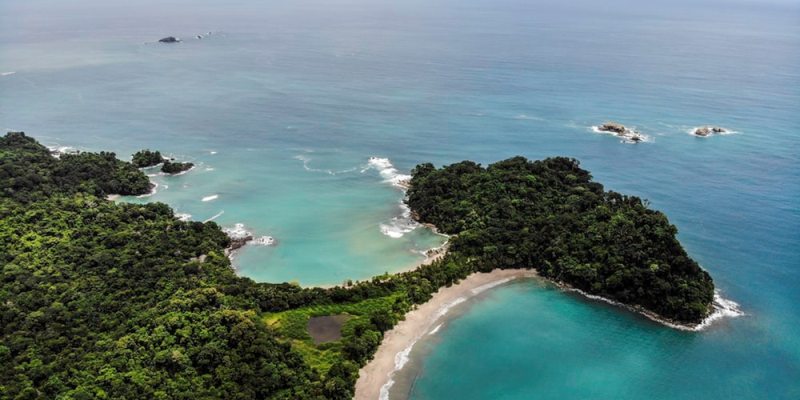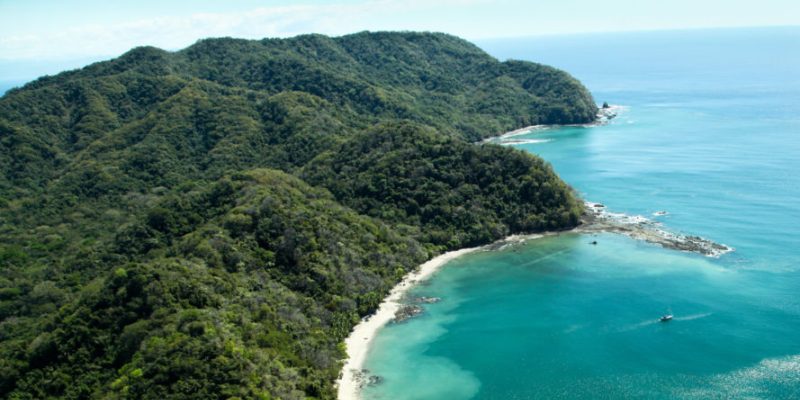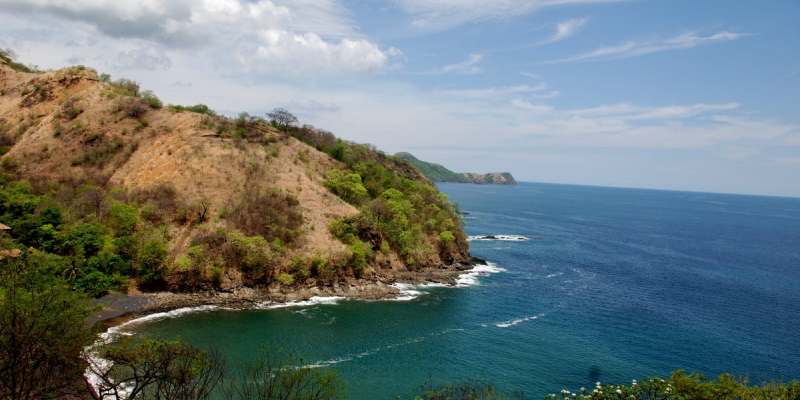Manuel Antonio National Park

The epitome of Costa Rica’s natural beauty, Manuel Antonio National Park consistently ranks as one of the country’s most popular destinations. Small though it may be, the park packs in gorgeous beaches, lush rainforest crisscrossed by multiple hiking trails and hundreds of different tropical animal species. Monkeys, toucans, agoutis, iguanas, macaws, sloths and a host of other wildlife call this 682-hectare park home.
The rare squirrel monkey numbers in the hundreds in the park and the mischievous capuchin or white-faced monkey abounds here. In fact capuchins may even try to steal some of your belongings if you’re not vigilant. Don’t be tempted to feed them either as it is both illegal and harmful for the monkeys to eat human food.
The most popular activities in the park are hiking, bird watching, wildlife watching, swimming and snorkeling the park’s coral reefs. There is a rip current at Playa Escondido, which can be quite strong, so swimmers must be cautious.
Guides are available for hire for around $20 per two-hour tour and they are really worthwhile if you want to see as many animals as possible. All certified guides are members of an organization called Aguila and they are generally well trained. Many guides are bilingual so be sure to ask if you prefer your tour to be in your native language.
Manuel Antonio National Park’s popularity has led to visitor limits: 600 people per weekday and 800 on the weekend – the park is closed on Mondays. Try visiting during the green season or wet season (temporada verde or temporada de lluvia), which lasts from May to November, in order to avoid the crowds. Avoid September and October, the rainiest months.
Manuel Antonio Beaches, Headland & Trails
There are four beaches in Manuel Antonio National Park. From north to south they are Playa Espadilla Sur, Playa Manuel Antonio, Playa Escondido, and Playita. Playa Manuel is the most popular of beaches as it features picnic tables, showers and a troop of capuchin monkeys. The park ranger station is located right before Playa Manuel Antonio and you can also find toilets, drinking water and a refreshment stand here. Also, there is a small open-air museum and information center at the beach.
The best trail in the park is known as the Perezoso Trail, which is so named for the sloths that are frequently seen on this route. Perezoso is Spanish for sloth.
Separating Playa Espadilla Sur and Playa Manuel Antonio is a dramatic rocky headland called Punta Catedral. Formerly an island Punta Catedral is now connected to the mainland via a narrow spit of sand which is called a tombolo. The sand bridge is the result of thousands of years of sand deposits in the channel between the island and mainland, and in that time a thin strip of vegetation has developed adding to the dramatic look. An easy one-mile trail loops around the entire headland. You can hike to the top of Punta Catedral (100 meters) in about one hour.
Getting to Manuel Antonio National Park
Located on the Central Pacific coast just south of Quepos, Manuel Antonio National Park is entered through the village of Manuel Antonio Costa Rica. A bus leaves Quepos for Manuel Antonio every 30 minutes from 7am to 8pm. All flights to Manuel Antonio land in Quepos. Buses out of Manuel Antonio are usually packed, so I suggest you buy your ticket early.
The entrance to the park is at the eastern end of Playa Espadilla. Here you must wade across the Rio Camaronera to get into the park or you can choose to hire a boatman to take you across at high tide, which is about waist deep.
An entrance fee of $7 is payable at the ranger station and there are only day passes available. Camping is prohibited.


